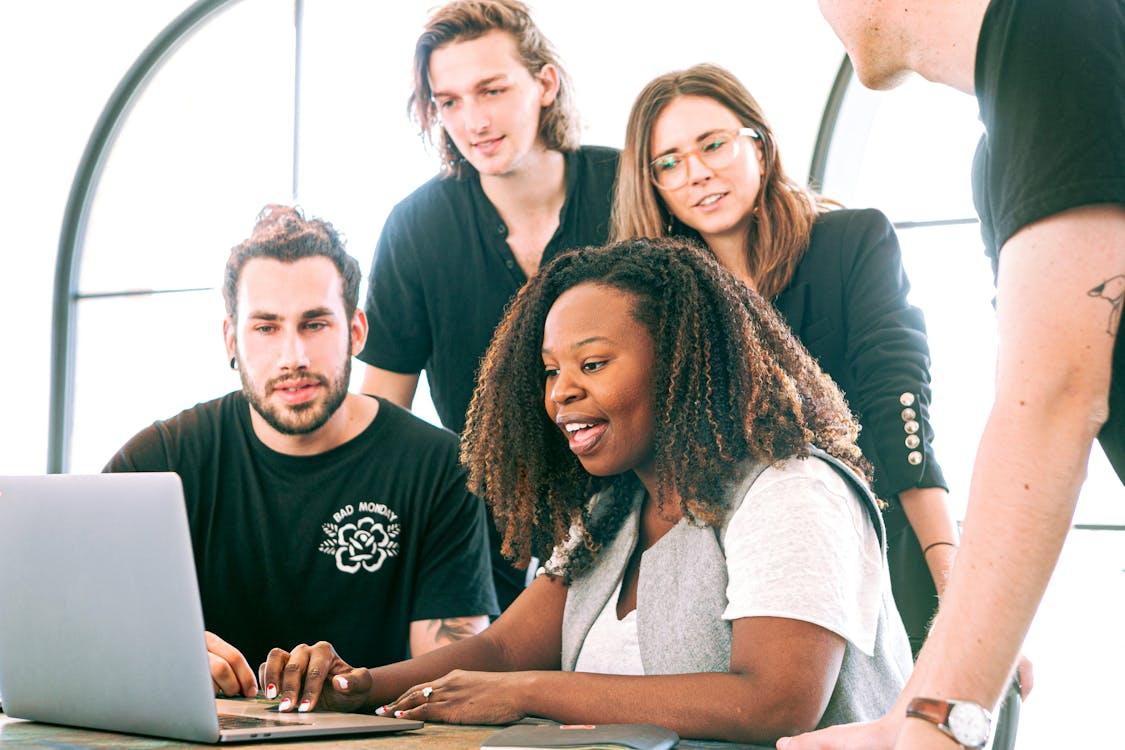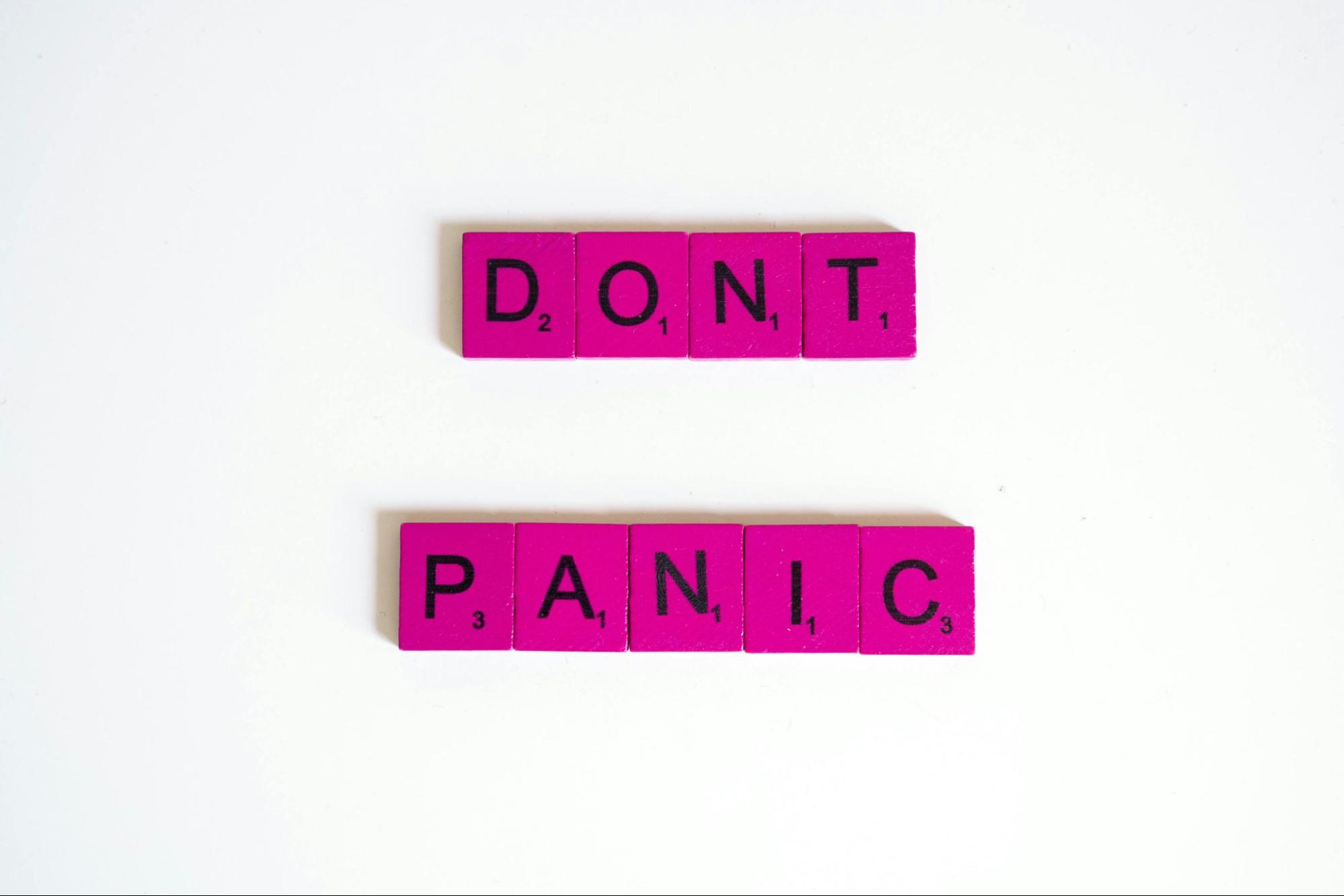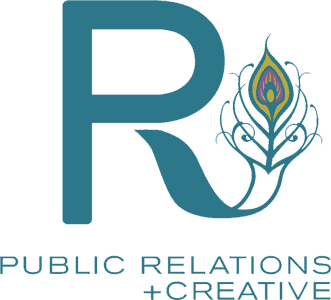Business
Inside the Agency: PR Management Strategies that Keep the Big Picture in Focus
Things move fast in the public relations arena. Pitches fly, content calendars fill, social posts go live, and clients expect visibility yesterday. For smaller agencies, especially, it’s easy for team members to stay heads-down in execution mode—focused on their own deadlines, deliverables, and inboxes—without pausing to check: Are we still chasing the right story? Are we aligned on the “why”? It’s a challenge we’ve wrestled with ourselves at RPR as we grow. And we’ve learned that managing a fast-moving agency requires more than just strong task management—it demands intentional PR management strategies that keep the big picture in view.

Here are five PR management tactics we’ve found helpful for keeping strategy front and center while still moving at full speed:
1. PR Management 101: Start with a Strategy—and Revisit It Often
Your kickoff strategy document should be more than a one-and-done artifact. It’s the north star for the relationship, but without regular revisits, it’s easy for the team to drift.
“We always say that strategy is a living, breathing thing,” says Emily Reynolds, PR expert and founder of RPR. “If you don’t check in on it regularly, it becomes outdated—and then the work becomes disconnected.”
Treat the strategy like a living document. Rechecking goals, adjusting priorities, and realigning with the client at major milestones (or pivots) ensures that everyone understands why they’re doing what they’re doing. This also gives junior team members valuable context. You can also schedule quarterly check-ins to revisit the core strategy—even if nothing’s broken. If you wait until something goes off track, you’ve waited too long.
2. Define Roles Across Functions—Then Connect the Dots
In a multi-disciplinary agency like RPR, content, social, PR, and digital often run in parallel. But too often, that parallel structure becomes siloed.
Instead, bring cross-functional partners into key meetings. Let your content strategist weigh in on pitch angles. Invite your social team to brainstorm brand storylines. When teams understand what others are working on—and why—it builds better ideas and more cohesive campaigns.
And make sure every person knows not just what they’re responsible for, but how it ladders up to the broader goals.
“We’ve learned that transparency between departments doesn’t just create stronger campaigns—it makes our people feel more empowered,” says Emily. “When someone sees the connection between their work and the client’s bigger picture, it’s a game-changer.”
3. Establish Clear Checkpoints (Not Just Status Calls)
Weekly status calls are table stakes—but they’re not enough. Without structured checkpoints, people fall back into task lists and lose sight of outcomes.
We’ve found it helpful to add monthly alignment reviews where we pause to ask:
- What did we say we’d achieve this month?
- What’s working, and what’s not?
- What’s changed for the client?
- Do we need to pivot?
This space for critical reflection often reveals deeper insights than a rapid-fire status update ever could.
4. Over-Communicate the “Why” to the Client (and Internally)
Clients hire PR agencies for results, but they stay because of trust, and that trust grows when we connect the dots between deliverables and strategy.
If a media list gets trimmed, explain why. If a story doesn’t land, walk them through the learnings. When a win happens, tie it back to the big picture.
Internally, this matters just as much. Make sure junior staff know why they’re being asked to build a media list a certain way or frame a pitch around a specific audience. The more context we share, the more empowered the whole team becomes.
“We’re not just sending press hits into a void,” Emily explains. “Every pitch, every post, every decision has a purpose—and our job is to make sure our team and our clients never lose sight of that purpose.”

5. Encourage Cross-Team Debriefs and Collaboration
One of our most effective practices has been internal campaign retros—quick, collaborative meetings after a campaign, event, or product launch. Every team shares what worked, what didn’t, and what to do next time.
This doesn’t have to be formal or time-consuming. Sometimes it’s a 15-minute coffee chat. The goal is to keep learning alive and spread insights across functions.
Plus, it builds stronger relationships between departments, which helps ideas and information flow more easily next time.
Bringing It All Together
At the end of the day, PR management isn’t just about juggling timelines and deliverables. It’s about cultivating clarity in direction, collaboration, and purpose. When teams stay aligned on the big picture, they work smarter, communicate better, and deliver results that truly move the needle.
At RPR, we’re still evolving our systems to support this kind of clarity and collaboration, but these practices have helped us move from reactive to proactive. They’ve helped us not just do the work, but make the work mean something.
And when the “why” is clear, everyone shows up stronger.
Curious to learn more pr management tips to align teams, clients, and campaigns? Connect with RPR today!
PR Pros’ Ultimate Secret Weapon: Continuous Professional Growth
"Public relations is a mix of journalism, psychology, and lawyering—it's an ever-changing and always interesting landscape." – Ronn Torossian.
Today, as the information mill turns and attention spans shrink, media, trends, and consumer cycles continuously gain speed. This constant information overload often causes consumers' focus to be fickle, with the potential to protect or significantly harm their chosen subjects.
To be an effective publicist and PR practitioner, one must be aware of these focuses, shifts, values, practices, and more. Love it or hate it, it's a field that demands agility.
The awareness possessed by the best industry professionals goes deeper than simply keeping up. It stretches into the art of anticipation and requires a deep commitment to continuous learning and professional development. That's where the magic lies.
Ever-Evolving Landscapes
Any long-time PR professional will tell you that when they first started, traditional media contacts were the primary gatekeepers of any public-facing outlets. However, over the years, these pros had to adapt to a significant industry expansion, bringing new outlets, platforms, and gatekeepers to the table. New social media software, trends, influencers, content creators, AI-generated content, and more continue to keep the PR industry flowing, which means practitioners always have something new to learn—seriously, always.

While this can be a heavy lift—often stopping previously successful strategies in their tracks—it means there is always new information to explore, skills to learn, and strategies to experiment with.
While storytelling skills remain essential in PR, industry professionals can now explore data analytics, SEO, video production, digital strategies, AI tools, and more that have the potential to impact and ultimately enhance client campaigns.
Strategic Advantages
Because PR is not a profession where practitioners can 'learn once and practice forever,' many of the most successful industry pros treat learning as a key facet of their job, not an extracurricular.
PR professionals who explore these new territories and pursue professional growth continuously enhance their creative abilities, develop greater adaptability and long-term career resilience, and cultivate confidence, especially when pitching cutting-edge strategies or in high-stakes situations.
Being a team player and a valuable asset to clients means staying sharp. Regardless of whether it's a decision-maker in an agency, an in-house team, or a client, leaders place great value on pros who provide fresh perspectives, creative approaches, and diverse areas of expertise.
The Role of Professional Accreditations in Credibility
Public relations is arguably less traditional than many professional fields, which require more centralized training, such as nursing and law. Still, PR practitioners can stay sharp and pursue education-based professional growth in numerous ways.
For example, R Public Relations' (RPR) founder, Emily Reynolds Bergh, is currently working toward her Accreditation in Public Relations (APR)—a rigorous, peer-reviewed credential demonstrating mastery of strategic communication, ethics, and planning.
Emily is a PR practitioner with over a decade of experience. By obtaining her APR, she concretely proves her commitment to and mastery of the industry, underscoring a deep comprehension of PR strategies and ethics.
While the APR is a key example of PR-focused professional growth, specialized training is available in various areas, such as crisis communication and digital media strategy.

Fostering a Professional Growth Mindset
Growth-minded pros continuously raise the bar for themselves, but they also do so for coworkers and peers throughout the industry. The acquisition of technical skills and specialized knowledge results in information being shared, junior team members being mentored, innovation being encouraged, and further training being made available.
In Emily's case, her continued professional growth shows the RPR team that she is dedicated to being a leader in her field. It provides employees greater access to information, showcases a long-term investment in client success, and conveys that team members will be encouraged and supported in their own professional growth-centered efforts.
In an industry as dynamic as PR—where one post, comment, or decision can flip a narrative on its head—growth and awareness aren't a luxury; they're a necessity.
Industry professionals who embrace this mindset have an edge that often benefits themselves, their organizations, and their clients—they lead, inspire, and ultimately succeed fabulously.
Emily and the RPR team’s ongoing pursuit of excellence is an exemplary display of what's possible when knowledge acquisition and development are treated as priorities rather than afterthoughts.
Regardless of whether a PR professional is just starting or decades into their career, investing in their craft is essential. Pursue the certification, attend an engaging webinar, or read that new research report because—in the world of public relations—professional growth is your greatest advantage.Interested in learning more about how RPR can apply our continuously evolving knowledge and skills in developing successful PR campaigns for your brand? Connect with RPR today!
Relationship Goals: Best Practices for PR Client Communications
PR as an industry is centered on communication, whether it’s between PR practitioners and the media, brands and the public, or some combination. However, in order for PR practitioners to strategically communicate on behalf of the brands they represent, there’s a foundational element in the PR and client relationship that must be established first: clear, effective communication. This is essential in building trust, loyalty, and the strong partnership necessary to achieve PR success. But, as many of you may already know all too well, it’s not as easy as it may seem to create this type of communication with PR clients.

We can help with some best practices for PR client communication that we’ve used to build lasting relationships with our own clients!
1. Be respectful of time.
Time is a valuable asset in PR for pretty much everything, from the timeliness of campaigns to responding to media to client communication. It’s an incredibly fast-paced industry, so it’s important to show how much you value your PR client’s time from the very beginning of your partnership.
It’s something small, but so infrequently done today, in general, that it can make a huge impact in the PR client relationship. Here are some simple, effective actions that we’ve put into practice.
- Be punctual. Arrive on time for meetings and calls.
- Be prepared. Set and share a clear agenda ahead of meetings and review any key talking points before signing on.
- Cut meeting times down as needed. If you find that 30-minute meetings are over and done within 15 minutes, compress meeting times. This helps free up time that could be spent on other things for both you and your clients.
In turn, if your client follows these same actions with you, let them know how much you appreciate that they value your time as well!
2. Set clear expectations.
PR is also a demanding industry. Not only are there so many moving parts with any campaign, but it’s not unheard of for clients to have expectations regarding timeframe or goals that may not be achievable, or even in their best interest. For example, your client may dream of being featured in The Wall Street Journal, but national media coverage might not be the most fruitful approach. As such, it’s important to set clear expectations with your clients from the beginning of your working relationship, and that may include some education as well. After all, they chose you for your PR expertise!
Establishing clear expectations provides both you and your clients with a specific roadmap to follow. These expectations should define measurable goals and ensure that everyone is aligned. This makes it so much easier to strategize and help prevent misunderstandings effectively.
3. Communicate transparently, even the bad news.

Transparent communication is another key to any good PR client relationship. This goes for both the good and bad news. Communicating transparently requires consistency, so be sure to schedule regular check-ins that align with everyone’s schedules, remain open to feedback, and be honest about the wins and the challenges.
PR campaigns may not always go as smoothly as we hope. From social media platforms’ ever-evolving algorithms that can impact a brand’s organic reach to media pitches not landing right, it’s essential to communicate with PR clients even when something has gone wrong. Be sure to offer potential solutions to the issues. This not only keeps clients in the loop but further establishes trust.
4. It’s all about collaboration.
Solid PR communication relies on collaboration. It ensures that you can work as effectively as possible—whether you’re handling a PR crisis situation, brainstorming new ideas, or, as mentioned above, educating on why one PR strategy might be better than another.
Collaboration requires transparent communication, defined goals, and the ability to adapt and innovate. By collaborating with your PR clients, you ensure that you’re able to understand their needs and develop targeted strategies unique to each client.
With these best practices in your PR client communication toolbox, you set yourself up to build successful relationships long-term. We’ve noticed the difference, and our clients have too!
Curious to learn more about how RPR works with clients to deliver results-driven PR strategies? Connect with us today!
5 Influencer Red Flags and What to Do About Them
Before you send that first product or sign that contract, pause. The wrong influencer can drain your budget and derail your business’s growth. The good news? Influencer red flags are easy to spot if you know what to look for.

At RPR, we have dealt with our fair share of influencers, developing our knowledge on the best and worst kinds. The right influencer can drive conversions and brand awareness. The wrong one is a costly misstep that drains your time, resources, and morale. We get it—working with influencers can be daunting when you are not sure who the best fit is for your brand, so we’re here to help!
Let’s break it down. Here are five major red flags to watch for before you commit:
Influencer Red Flag #1: Their Engagement Doesn’t Match Their Follower Count
Sure, an influencer with 100K is nice and all, but if no one’s actually paying attention to their content, their follower count doesn’t matter.
Engagement rate is the real metric to focus on. It tells you how connected an influencer really is with their audience and, ultimately, how likely their followers are to take action from a post. You can check influencers' engagement rates using tools like Modash. Bigger isn’t always better, and buying followers is very easy nowadays. Check their comments for bots to make sure their engagement is genuine, too. Trust your gut. If it feels fake, it probably is.
Influencer Red Flag #2: Poor Communication
Don’t expect communication issues to get better if they’re bad early on; if anything, take it as an influencer red flag. Clear communication is critical to any partnership. Make sure to set expectations upfront in writing to help nail down those deliverables. Not sure what that should look like? We can help.

Influencer Red Flag #3: They Don’t Seem Genuinely Excited
You deserve a partner who’s excited about your brand. If the vibes are off and it’s clear the paycheck is all they care about, cut it off.
Audiences can tell when a partnership feels authentic—and when it’s just another sponsored post. True excitement can’t be faked, so stick with those who are genuinely excited about your brand.
A way to gauge this is to see if they ask you questions about your brand, goals, and deliverables. These are all good signs that they are actually invested in the partnership. If it feels like they’re going through the motions, it’s okay to walk away.
Influencer Red Flag #4: No Proof of Past Performance
A credible influencer can support their work with data. They should be able to show what they’ve done and how it performed through case studies and analytics reports. A trustworthy influencer will be proud to share those insights. Ask potential influencers for proof of past performance, and if they avoid showing you how their past partnerships performed, reconsider the partnership.

Influencer Red Flag #5: Zero Process
While posting a successful story or reel might seem simple, there’s actually a great deal of planning that goes behind it. If the influencer doesn’t have a strategic plan on how they meet deadlines, it’s okay to pass. A good influencer doesn’t just post—they plan. Ask them about their process from concept to content approval to post-campaign reporting. Influencers who have a standardized process are more likely to stay on track and help your business hit its goals.
Find Authentic Influencers with RPR
No influencer red flags here! At RPR, we understand how overwhelming it can be to take on uncharted waters like influencer partnerships. From vetting influencers to managing contracts and campaign execution, the RPR team knows what it takes to build successful influencer partnerships. Whether you’re launching your first influencer campaign or trying to recover from a bad experience, RPR is here to help connect you with authentic influencers that align with your brand!
5 Best Practices for Working with Influencers
In today’s world, social media is a must for small businesses looking to grow, engage with customers, and boost their brand awareness. However, navigating the ever-changing landscape of platforms, influencers, and algorithms can be tricky. One area that often comes up in conversations is how small businesses should approach working with influencers. This guide answers some of the most common questions and provides key insights for successful influencer collaborations.

1. What Should Small Businesses Look for in an Influencer?
When you're just starting, it’s easy to assume that influencer marketing is all about finding someone with the highest number of followers. While reach is important, it’s more critical to find an influencer whose audience aligns with your target market. Look for influencers who share values that match your brand, and whose followers are genuinely engaged with their content. Working with influencers who have built trust with their audience will yield better results than simply partnering with a well-known face.
2. How Do You Approach Influencers?
When reaching out to potential influencers, be clear about your expectations. From the beginning, it’s essential to be professional and transparent about your budget and expectations. Highlight why you think they would be a great fit for your brand and give specific ideas for collaboration, whether it’s a product review, giveaway, or social media post. Be sure to discuss the deliverables, timelines, compensation, and any potential creative control the influencer will have. Transparency builds trust and helps avoid misunderstandings later on when working with influencers.
3. How Much Should You Pay Influencers?
One of the trickiest aspects of influencer marketing is determining compensation. Influencer rates can vary widely based on their reach, niche, and the level of content production required. Smaller influencers, often referred to as "nano-influencers" (those with around 1,000 to 10,000 followers), tend to charge less, making them a more affordable option for small businesses. If you’re working on a tight budget, consider offering product gifting as compensation. If you’re looking for a longer-term partnership or campaign, be prepared to discuss rates based on your desired scope of work. When trying to gauge spend per Instagram post, this is Influencer Marketing Hub’s rule of thumb:
- Nano (1k-10k followers) - $10-$100
- Micro (10k-50k) - $110-$500
- Mid (50k-500k) - $500-$5000
- Macro (500k-1M) - $5000-$10,000
These numbers can vary widely depending on the influencer’s engagement, but this is generally a good rule of thumb.
4. What Red Flags Should You Watch for When Working with Influencers?
When working with influencers, it’s important to keep an eye out for any red flags. One major red flag is engagement that doesn’t match the follower count. If an influencer has tens of thousands of followers but little engagement (such as likes or comments), it could indicate that their following is inflated with bots. This could mean they have bought their followers. Also, be wary of influencers who aren't clear about disclosing partnerships with brands. The Federal Trade Commission (FTC) mandates that influencers disclose paid promotions clearly.

5. How Do You Measure the Success of an Influencer Campaign?
Success in influencer marketing is not just about sales. While driving revenue is definitely an important goal, it’s also about increasing brand awareness and engagement. Make sure to track metrics such as social media mentions, the number of new followers, website visits, and overall audience engagement. Using tools like Google Analytics and social media analytics tools can help you track the success of the influencer collaboration in real-time. It is important to track metrics, but this is only one piece of the puzzle. Give your brand and the creators you work with time to grow. By asking influencers for insights into their campaigns, you can adjust your strategies and improve over time.
Making the Most of Influencer Marketing
Working with influencers can be a game-changer for small businesses, but it’s important to approach it strategically. By understanding how to choose the right influencer, set clear expectations, and measure success, you can use influencer partnerships to grow your brand authentically and effectively. If you’re interested in learning more about influencer marketing or need help finding the right influencers for your business, reach out to us! RPR specializes in helping small businesses navigate the influencer landscape and can offer personalized strategies to boost your brand.
Answers to Our Most Asked Small Business Social Media Questions
Social media usage has only continued to grow over the last several years. As of 2024, over five billion people are using social media worldwide. With such a large user base and a landscape that is only growing, small businesses can’t afford not to have some kind of social media presence. But for new and experienced small business owners alike, social media can be an especially intimidating part of business marketing. So, it’s no surprise that we get many questions from small business owners about how to approach social media.

To help you get a better understanding of how to tackle socials, we answer some of our most asked small business social media questions below.
Do I need to post on every social media platform?
The long and short answer is no. You do not have to put your small business on every social media platform. The best social platforms for you to be on will vary depending on a few factors, including:
- Business type
- Target audience demographic
- Type of content you share
- The platforms your target audience is using
- Social media goals
These factors will be key to helping you narrow down what platforms to focus on for your small business. While it can be tempting to jump onto every social platform right away, this can ultimately be a bad strategic move if your audience isn’t on every platform. Remember that less is more, and you can maximize your time, effort, and content by focusing on a select few social media platforms that are most relevant to your business.
What type of content performs best on social media?
The best-performing content on social media is going to largely depend on two things: your target audience and the social platforms you’re using. For some platforms, visual content like photos and videos will perform the best, while text-based posts will perform better on others.
According to the Pew Research Center, YouTube and Facebook are two of the most widely used social media platforms in the U.S. alone as of 2024. And more than half of U.S. adults use platforms like Instagram, TikTok, LinkedIn, and X (formerly Twitter). Each of these platforms will see a different type of content that performs best. For YouTube and TikTok, videos are the primary content type, while LinkedIn and X see traction with content like short text posts and blogs. For some platforms, a mix of content types will offer the best performance.
You can experiment on your own and with the help of RPR to figure out what formats work best for you.
What do I post?
Figuring out what to post involves several previously mentioned factors: your business type, target audience demographic, and the social platforms you’re on. These will be beneficial to keep in mind as you determine what to post. Whether you post photos, videos, blog posts, live videos, or infographics will largely depend on what platform you’re on, what information you’re sharing, and what your audience responds well to.
Remember that you’re a small business owner. You’ll want to share promotional content regularly that highlights your products and services, but you’ll also want to share posts that are funny, relatable, or informative to your customers. A variety of different content will keep your audience engaged.
For example, say your business has an ongoing sale, and your customers have been sharing photos of the products they purchase on Instagram. It would be beneficial to post about the sale in a promotional manner and highlight the customer posts on your social page. This helps enhance social engagement and increase your visibility. By using a variety of content, you can leverage your social media campaigns to their fullest.
How often do I post?
Posting frequency will vary from platform to platform. For example, Instagram recommends that users post a few times a week. And according to HubSpot’s 2024 State of Social Media Report, marketers post on platforms like TikTok and X a few times a day. You can also reference your direct competitors to get an idea of how often they’re posting on social media as well.
It’s also important to remember that posting frequency differs between large and small businesses. Larger businesses often have a full marketing team that can post frequently across all social media platforms. Small businesses like yours typically don’t have the time or resources to post as often—though you can seek the help of a PR team to build out your social media efforts further.
Ultimately, how often to post comes down to what works best for you. Keep industry insights and the size of your business in mind and experiment with posting frequency to see what you can maintain on the regular.

How do I measure my small business's social media presence?
There are several different tools you can use to measure your social media presence—including analytics tools that are built directly into the platforms. Built-in analytics tools often display information like total followers, growth rate, audience demographics, and post impressions and reach. You can also use tools like Buffer, Sprout Social, and Hootsuite, which provide additional analytics features.
Another tool you can use to measure your social media presence is Google Analytics. This is a powerful tool that PR professionals often use to measure campaign success, but it can also be used to understand how your social platforms contribute to traffic and user behavior on your business website.
How can I grow followers?
Growing your followers can be achieved through a few methods. As discussed above, you’ll want to choose platforms where your target audience is. From there, you’ll want to optimize your small business social media profiles so that they’re recognizable. This is done by using branded imagery, linking to your website, filling each profile out completely, and incorporating targeted keywords relevant to your business and industry.
Posting consistently, both in frequency and the quality of your content, helps to grow followers as well. Be sure to post content that your audience can find engaging or helpful—use your social analytics to see what kind of content is performing best, or directly ask your followers.
Lastly, actively engaging with your audience shows potential followers that you’re communicative and keeps you in touch with the community you’re building around your business. Engage by responding to comments, answering questions, and sharing interactive content. Be sure to remain authentic to your small business, and don’t try to mimic other brands—your true brand, tone, and voice will resonate with your followers and help you grow.
Small business social media doesn’t have to be a solo venture
In today’s digital world, having a social media presence isn’t optional for small businesses—but it doesn’t have to feel overwhelming. Now that you have a better understanding of the basics, you can start identifying the right platforms for your business, refining your content strategy, and leveraging tools to track your growth.
If you’re ready for a dedicated social media partner to handle the details, our team is here to help.
For expert guidance in creating a social media strategy tailored to your business, contact RPR today to schedule a discovery call.
Would My Brand Benefit from Paid Social Media Ads?
In today’s digital landscape, social media has become an essential tool for businesses looking to expand their reach, engage with their audience, and drive conversions. However, one of the biggest decisions small business owners face is whether to rely on organic social media strategies or invest in paid social media ads. Understanding the advantages of each approach—and when to use them—can make a significant difference in achieving marketing goals.

The Power of Social Media for Small Businesses
Social media provides small businesses unparalleled opportunity to build brand awareness, foster customer relationships, and generate leads. Platforms like Facebook, Instagram, LinkedIn, and TikTok allow businesses to engage directly with their audience through content, conversations, and community building. While organic social media efforts are valuable, they often take time to yield substantial results. This is where paid social media ads come in.
Paid vs. Organic Social Media: What’s the Difference?
Organic social media marketing involves posting content without paying to boost visibility. This strategy relies on high-quality content, audience engagement, and algorithmic reach. While organic posts are cost-effective and help build authentic relationships, their reach is often limited due to platform algorithms prioritizing paid content.
On the other hand, paid social media ads involve investing in promoted posts or advertisements to reach a specific audience. Paid campaigns allow businesses to target demographics based on interests, behaviors, and location, ensuring their message reaches the right people at the right time. Unlike organic efforts, which can take months to gain traction, paid ads deliver immediate results.
Key Considerations for Small Businesses
Before investing in paid social media ads, small businesses should evaluate the following factors:
- Business Goals: Are you looking to increase brand awareness, drive traffic, or generate sales? Paid ads are particularly effective for businesses aiming for rapid growth or targeting new customer segments.
- Budget: While paid social media ads require an investment, they can be customized to fit any budget. Small businesses can start with a modest amount and scale as they see results.
- Target Audience: Understanding your audience is crucial. If your organic engagement is already strong, paid ads can help amplify your reach to potential customers who haven’t yet discovered your brand.
Content Strategy: High-quality visuals, compelling ad copy, and clear calls to action are essential for success. Businesses should test different ad formats, such as carousel ads, video ads, and stories, to see what resonates best with their audience.

Support with Paid Social Media Ads
Navigating the complexities of paid social media advertising can be challenging, especially for small business owners managing multiple responsibilities. This is where partnering with a firm like RPR can make all the difference. RPR specializes in crafting targeted social media ad strategies tailored to business needs, ensuring optimal ad spend, and maximum return on investment. From audience research and ad creation to campaign monitoring and performance analysis, RPR provides the expertise needed to run successful paid social media campaigns.
Final Thoughts
While organic social media strategies are valuable for building relationships and credibility, paid social media ads offer a powerful way to accelerate growth, increase visibility, and drive measurable results. By carefully considering business goals, budget, and audience needs, small businesses can make informed decisions about incorporating paid ads into their marketing strategy. Additionally, tracking key performance metrics and continuously optimizing campaigns can help ensure a strong return on investment. Paid advertising provides the ability to target specific demographics, test different creatives, and adjust strategies in real time to maximize effectiveness. And with the support of a professional firm like RPR, businesses can maximize their ad performance, reach their ideal customers more effectively, and achieve long-term success in a competitive digital landscape.
Three reasons your brand may not need national media coverage
In the wise words of Vincent Van Gogh, “Great things are done by a series of small things brought together.” While the masterful painter may have been referring to creating art, the sentiment applies perfectly to public relations efforts. More often than we may recognize, we are exposed to a flurry of national media outlets, fictional TV shows that celebrate national recognition, and national news of our favorite celebrities, sports teams, brands, and even our competitors. This celebratory coverage leads many brands to believe that national media coverage is the ultimate PR goal for every business—the end-all-be-all to boost brand recognition, secure sales and gain an invested audience.
However, focusing on local and regional media can be a better investment as it can drive more robust results, meaningful connections and targeted exposure.
Because each approach has several benefits and drawbacks, paying close attention to your brand’s needs is essential when weighing which is right for your organization. To provide insight into the topic, here are three reasons why R Public Relations believes local and regional PR may be a more strategic approach for your business.

Broad reach ≠ relevant reach
While national media coverage is more likely to reach a vast audience, it is also likely to lack reach targeted at key audiences.
While national stories may acquire more impressive unique viewership metrics, the message conveyed in the piece may not resonate with the demographic actively viewing and engaging with the content.
For example, if a local restaurant is gaining traction in national media—but not in local or regional outlets—potential customers and regulars who could visit the eatery, increase sales and move the needle could be missed entirely.
In contrast, localized media coverage can provide strategic exposure by reaching more closely concentrated and easily definable target audiences, bolstering community involvement and recognition, and encouraging locals to engage with the business in some concrete way.
Oversaturated markets can dilute brand messaging
The phrases “big fish in a small pond” and “little fish in a big pond” perfectly illustrate this concept.
Regardless of how notable your brand is, when you release it into a large pond filled with thousands of other brands, thought leaders and industry professionals, it can easily be swallowed up by the fast pace of the news cycle, the noise of additional businesses, and timely current events that are ever-occurring.
While national media coverage can place your brand in areas and communities that are beneficial and unique to the access of the big pond, it is also undeniably valuable to be a big fish in a little pond.
This approach ensures that a brand’s story is conveyed to critical audiences authentically to the organization, that it is unique to its story and offerings, and that it stands out from the crowd, reducing the possibility of untailored or ingenuine messaging.

Cost-effectiveness is critical
Nowadays, costs seem to rise everywhere we look, and media is typically no different. National outlets play a vital role in the media landscape, but obtaining placements in this arena can require significant fees, ad buys and highly involved, long-lead pitching efforts.
To offset costs and ensure a positive ROI, investing in relationships and opportunities with local and regional publications can result in media coverage that earns your brand consumer buy-in and can even save money.
More often than not, localized outlets provide an array of affordable and authenticity-centered opportunities that are highly likely to reach audiences that have already been exposed to the organization, are interested in it or resonate with its key messaging.
Final thoughts
Focusing on obtaining opportunities with relevant reach, strong, genuine brand messaging, and budget in mind is a critical way to connect more authentically with your target audiences and communities and secure future success.
Investing in local and regional opportunities centered on these ideas will also build stronger relationships. Furthermore, it will build customer loyalty and word-of-mouth marketing, prompting further media coverage from invested outlets and contacts.
If this sounds like what your brand is looking for, then national exposure may not be the best action. While it may be valuable and vast, opting for more localized media is a crucial, solid and strategic foundation to build future coverage.
If you’re interested in learning more about the robust results, impressive ROI, strong community connections, and targeted engagement that localized media coverage can provide, contact R Public Relations today.
PESO Please! How Integrated Communication Strategies Can Transform Your Brand
For a long time, public relations (PR) lived in its own silo—focused solely on media relations, earned coverage and brand reputation. Marketing and advertising were separate entities, each working within their own lanes. But today, in the age of digital-first everything, PR is no longer just about press releases and media pitches. Instead, it’s about shaping a brand’s voice across all communication channels—paid, earned, shared, and owned.

That’s where the PESO model (Paid, Earned, Shared, and Owned media) comes in, offering a holistic approach to brand storytelling. When applied correctly, PESO creates a stronger, more consistent brand presence across all touchpoints using integrated communication strategies.
“Gone are the days when PR was only about media relations,” says Emily Reynolds Bergh, founder of R Public Relations (RPR). “Using the PESO model, we help clients leverage every communication channel in an intentional and coordinated effort, ensuring their message isn’t just heard—but amplified.”
Breaking Down the PESO Model
The PESO framework, created by PR expert Gini Dietrich, blends traditional PR efforts with digital marketing strategies. Here’s how each component works together:
1. Paid Media: Amplify Your Reach
Paid media includes social media ads, sponsored content and pay-per-click (PPC) campaigns. While PR has traditionally shied away from paid efforts, they’re now essential in getting your brand in front of the right audience at the right time.
💡 Example: If we secure an incredible media placement for a client, why not amplify it with a small paid boost on LinkedIn or Instagram?
2. Earned Media: PR’s Traditional Sweet Spot
PR professionals have always excelled at earned media, including media placements, interviews, podcast appearances, and industry recognition. This third-party validation builds credibility and trust like nothing else.
💡 Example: RPR secures a feature for a client in a major publication. By integrating it into a larger PESO strategy, we don’t just celebrate the win—we maximize it.
3. Shared Media: The Power of Organic Engagement
Shared media encompasses social media interactions, customer testimonials, influencer partnerships, and brand collaborations. This is where your audience gets involved—sharing, commenting and creating a dialogue around your brand.
💡 Example: A loyal customer posts about your product on Instagram. When shared on your brand’s page, it adds authenticity to your marketing efforts.
4. Owned Media: The Foundation of Your Brand Story
Owned media includes content you control and create—your website, blog, email campaigns, and brand newsletters. These channels are the foundation for your messaging, positioning your brand as an industry leader.
💡 Example: We can recommend updates if we see gaps in a client’s website content.

Why PESO Works for Today’s Brands
A fully integrated PESO strategy ensures that a brand’s message is consistent, cohesive and effective across all platforms. It removes communication silos and allows brands to leverage multiple channels to build authority, credibility and engagement. While traditional marketing has focused on generating leads and driving sales, PR has focused on brand trust. We are moving toward more integrated communication strategies that impact brand awareness and a business’s bottom line.
“At RPR, we don’t just secure media hits and call it a day,” says Bergh. “We help clients integrate every aspect of their communications, so they see measurable impact across paid, earned, shared, and owned channels.”
The result? A more powerful, data-driven approach to PR and marketing that delivers results beyond traditional media placements.
The Future of PR Is Integrated Communication Strategies
The days of PR living in a vacuum are over. Today, brands must think bigger, connect the dots and embrace an integrated approach, leveraging PESO to maximize visibility, credibility and brand loyalty.
Want to learn how RPR can help you build an innovative, modern and results-driven PR strategy? Let’s chat.
PR Best Practices: How to Avoid Hitting the Panic Button and Overreacting
It happens to the best brands—despite meticulous planning, a PR campaign doesn’t deliver the expected results. Worse, an unforeseen crisis derails all the hard work, putting your brand’s reputation at risk. When panic sets in, it’s easy to overreact emotionally, but in public relations, hasty decisions can do more harm than good. And trying too hard can make a brand look desperate. Emily Reynolds Bergh, award-winning public relations guru and founder of RPR Firm, reminds us that “Desperation is like a bad perfume—everyone notices.” Whether your strategy is struggling with a lack of media traction, a social media backlash or an internal PR crisis, keeping a cool head is the key to regaining control. Here are some PR best practices from Emily on what to do before you hit the panic button.

1. The number one PR best practice? Pause before you react
Your first instinct might be to fire off a response immediately, but acting out of frustration or fear can make things worse. Take a step back and assess the situation rationally. What’s the real issue? Is it a lack of engagement, a negative story or a misalignment between your message and your audience? Giving yourself a moment to breathe can prevent unnecessary missteps.
Ask yourself:
- Is this truly a crisis, or is it a temporary bump?
- Who is the audience affected by this issue?
- What is the likely outcome of responding versus staying silent?
- How will our brand be perceived based on our next move?
“Think before you act. You want your response to be measured, strategic and effective. This doesn’t mean ignoring the problem—it means responding with clarity rather than panic,” explains Emily.
2. Get the right people involved
You shouldn’t handle your PR crisis alone. Gather your internal communications team, key stakeholders and PR professionals to develop a strategic response. If you have an agency, lean on their expertise for PR best practices. The right messaging often requires input from multiple perspectives, ensuring you don’t overlook critical angles.
A great example of a team-driven response is how some brands use crisis response task forces—a designated group trained to handle PR challenges before they escalate. Even if your company doesn’t have a formal crisis team, knowing who to involve before a crisis happens ensures a smoother, more controlled response when the pressure is on.
Emily shares, “The key takeaway? In crisis mode, you don’t just need a voice—you need the right voices. Collaborating with a strategic team leads to smarter, more effective decision-making.”

3. Audit your messaging and strategy
If your campaign isn’t landing the way you expected, revisit your core messaging. Are you addressing your audience’s pain points? Is the timing right? Are you using the right platforms? A deep dive into your campaign analytics is one the PR best practices that can reveal whether the issue is with your message, your distribution channels or external factors beyond your control.
“If you’re dealing with negative press, determine whether a response is necessary. Not all criticism requires a rebuttal,” says Emily. Sometimes, letting the noise die down is the best approach. If a response is needed, craft a message that’s clear, empathetic and aligned with your brand values.
4. Avoid public displays of desperation
When things go south, resist the urge to overcompensate. Scrambling to push out more press releases, spamming journalists, or drastically changing your messaging mid-campaign can look erratic and insincere. Your audience can sense desperation, and that weakens credibility.
Instead, Emily suggests these PR best practices: “Be strategic and measured. PR is about relationships, and you don’t want to burn bridges by acting recklessly.” Take a step back, refine your strategy and move forward with confidence rather than panic.
5. Leverage owned media and brand advocates
If media coverage isn’t going your way, shift your focus to channels you control. Your blog, social media platforms and email marketing can help reframe the narrative. “Don’t overcomplicate your response,” says Emily. “A well-crafted statement from leadership, a behind-the-scenes look at how your company is handling a challenge or testimonials from satisfied customers can all shift the focus back to your brand’s strengths.”
Amongst other PR best practices is to lean on brand advocates—whether they’re customers, employees, or industry partners—to help amplify your message organically.

6. Learn from the experience
Every PR challenge presents a learning opportunity. Conduct a post-mortem:
- What went wrong?
- Were there red flags that were overlooked?
- What could be done differently next time?
Building resilience in PR means being able to pivot, adjust and improve. The best brands aren’t immune to PR challenges—they’re just better at handling them.
Final Thoughts
PR crisis mode can feel overwhelming, but the key to coming out stronger is maintaining composure, being strategic and refining your approach. Whether you rework your messaging, rely on owned media or simply know when to stay silent, handling crisis mode with confidence keeps your brand credibility intact.
As Emily wisely puts it: “Panic is contagious—but so is poise. Choose wisely.”
Connect with us today for more information about how RPR can help you respond (or not respond!) to a situation without going into PR panic mode.








